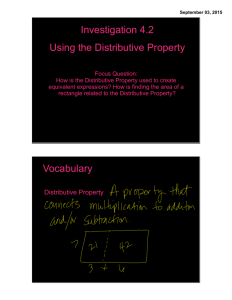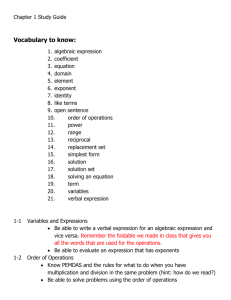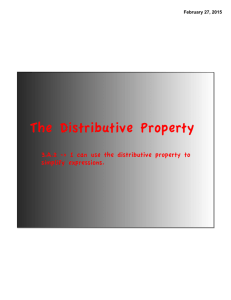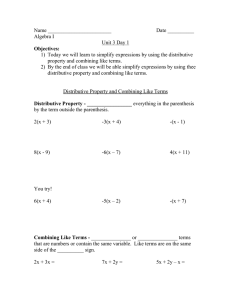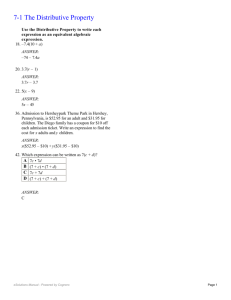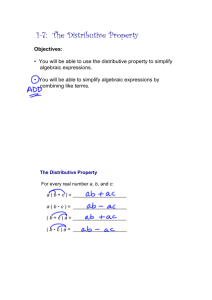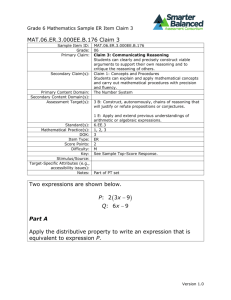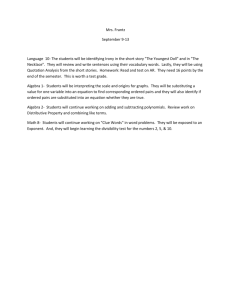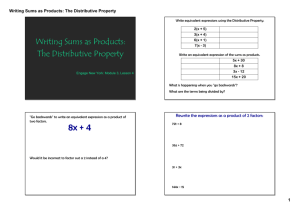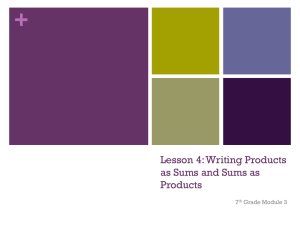Activity 2.4.3 Using the Distributive Property v 3.0
advertisement
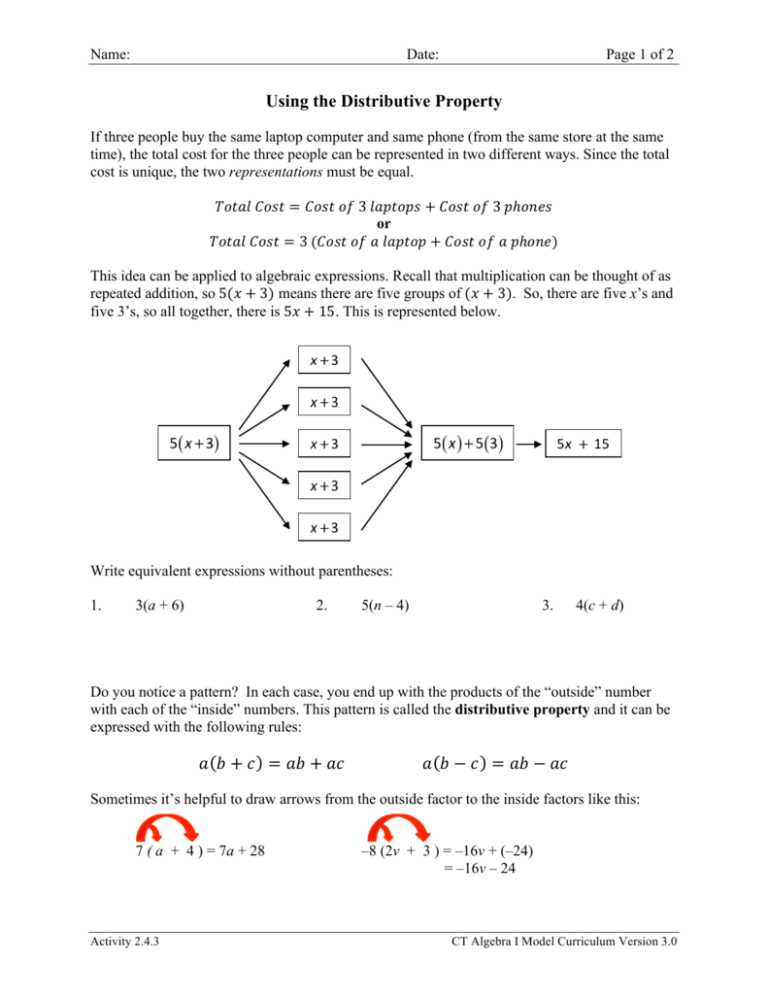
Name: Date: Page 1 of 2 Using the Distributive Property If three people buy the same laptop computer and same phone (from the same store at the same time), the total cost for the three people can be represented in two different ways. Since the total cost is unique, the two representations must be equal. !"#$% !"#$ = !"#$ !" 3 !"#$%#& + !"#$ !" 3 !ℎ!"#$ or !"#$% !"#$ = 3 (!"#$ !" ! !"#$%# + !"#$ !" ! !ℎ!"#) This idea can be applied to algebraic expressions. Recall that multiplication can be thought of as repeated addition, so 5(! + 3) means there are five groups of (! + 3). So, there are five x’s and five 3’s, so all together, there is 5! + 15. This is represented below. Write equivalent expressions without parentheses: 1. 3(a + 6) 2. 5(n – 4) 3. 4(c + d) Do you notice a pattern? In each case, you end up with the products of the “outside” number with each of the “inside” numbers. This pattern is called the distributive property and it can be expressed with the following rules: ! ! + ! = !" + !" ! ! − ! = !" − !" Sometimes it’s helpful to draw arrows from the outside factor to the inside factors like this: 7 ( a + 4 ) = 7a + 28 Activity 2.4.3 –8 (2v + 3 ) = –16v + (–24) = –16v – 24 CT Algebra I Model Curriculum Version 3.0 Name: Date: Page 2 of 2 Simplify the following expressions using the distributive property. 4. 9(5 + y) = 5. –5(–p + 6) = 6. 11(3c – 4) = 7. –2(4m – 7) = 8. 3(10x + 4) = 9. –1(p + 8) = 10. 2(3a + 4c – 5d) = 11. 0.5(8m – 4n) = 12. 6(1 – 5m) = 13. –2(1 – 5v) = 14. 3(4 + 3r) = 15. 3(6r + 8) = 16. –6(7k + 11) = 17. –3(7n + 1) = 18. –6(1 + 11b) = 19. –10(a – 5) = 20. (3 – 7k)(–2) = 21. –20(8x + 20) = 22. (7 + 19b)(–15) = 23. (x +1)(14) = Activity 2.4.3 CT Algebra I Model Curriculum Version 3.0

